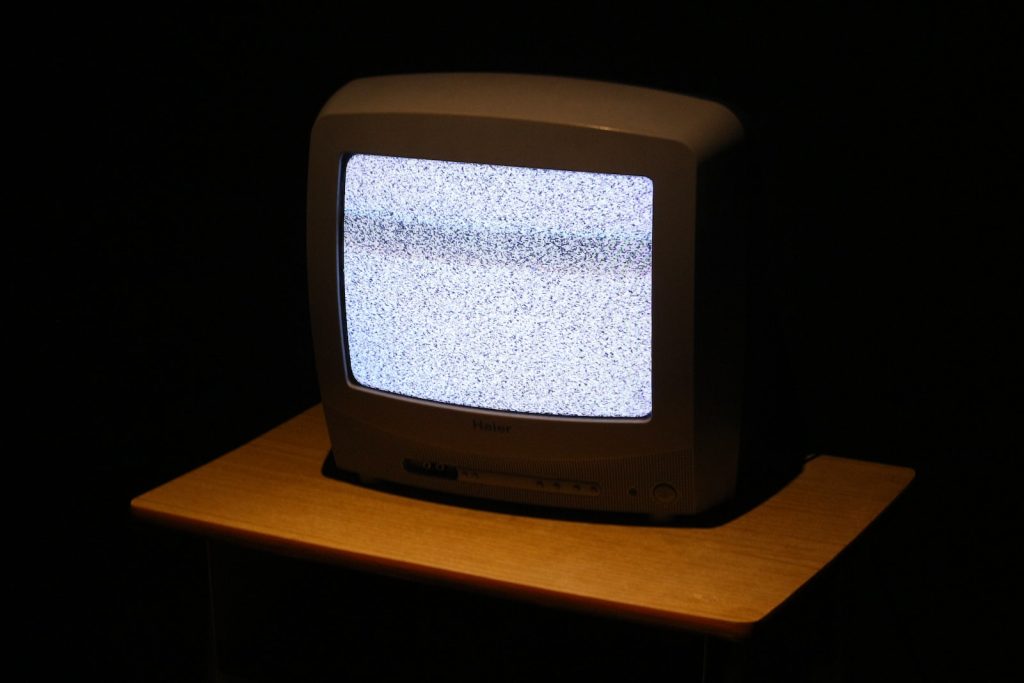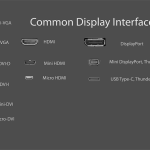Introduction
When I first think of computer monitors, I almost am always thrown back to that first day in school when they were explaining this new box that they had received. It’s a CRT monitor they would explain.That thing was massive, almost the size of 3 basketballs, and man, was it heavy! But to my amazement, I could control what was on the screen, and although it wasn’t anything compared to current standards, for the time, it was revolutionary ( literally ).
While there will always be a cycle of retro being cool with computer parts and even fashion, we have noticed that CRT monitors are enjoying a bit of a throwback moment among people. Just like some people say Vinyl just sounds warmer, some people will argue that CRT monitors are better than what we have nowadays. I honestly can’t get behind either the Vinyl or CRT arguments as I just don’t see/hear it, but I keep reading to find out more about CRT monitors from their early beginning to what they were replaced by.
While you won’t find a single CRT monitor in our top 5 monitors to buy right now, they will always have a spot of our top 5 types of monitors… in our heart 🙂
What is a CRT monitor?
A CRT monitor is a type of computer display that uses a cathode-ray tube. The cathode-ray tube is a vacuum tube that contains an electron gun. The electron gun fires electrons at the screen of the CRT monitor. The screen of the CRT monitor is coated with a phosphor. The phosphor in turn glows when the electrons hit it from the electron gun.
The first CRT monitors were developed in the early 1900s. They were used for scientific applications such as X-ray analysis and radar displays. In the 1950s, CRT monitors were developed for use in computers. In the 1960s, color CRT monitors were developed. Today, CRT monitors are used in computers, televisions, and other electronic devices.
Early history: the first CRTs
The cathode-ray tube, or CRT, is a display device commonly used for computer monitors and televisions before the advent of flat-screen technologies. CRTs work by firing electrons at a phosphor-coated screen, emitting light to create an image.
CRTs were first developed in the late 19th century by German physicist Karl Ferdinand Braun. Braun’s CRT was used as a display device for early oscilloscopes and televisions. The first commercial use of CRTs was in the form of “cathode ray oscillographs,” which were used to display waveforms from electrical signals.
In the 1930s, British engineer Alan Blumlein developed a method for using CRTs to create color images, which led to the first color televisions.

The rise of CRT monitors: why they became popular
The cathode-ray tube, or CRT, the monitor was the mainstay of computer displays for many years. They were first introduced in the late 19th century and became widely used in the 20th century. CRT monitors were popular because they were relatively inexpensive to produce and could be easily adapted to various uses.
CRT monitors work by firing electrons at a phosphor-coated screen. The phosphor glows when it is struck by the electrons, producing a visible image. The first CRT monitors were used for scientific purposes, such as displaying X-rays. But it wasn’t long before they were adapted for use in television sets and computer terminals.
CRT monitors remained popular until the early 21st century, when they were replaced by newer technologies such as LCD and plasma displays.
The decline of CRT monitors: why they are no longer used
Over the past few years, CRT monitors have been gradually phased out in favor of LCD screens. There are several reasons for this shift. First, LCD screens are much thinner and take up less space than CRTs. They also use less power, which is important both for reducing energy costs and for making laptops more portable. Additionally, LCDs provide a sharper image than CRTs. Finally, LCDs do not emit as much radiation as CRTs, which is a health concern for some people.
At the end of the day when you compare the screen resolution of current computer monitors, the size , the weight, and pretty much every feature of monitors CRTs just don’t stand a chance.
What is a CRT monitor made of?
A CRT monitor is made of a vacuum tube with an electron gun at the back that emits a stream of electrons. The electrons are then accelerated by a series of anodes and focused onto a phosphor-coated screen, which glows and creates the image you see. The front of the CRT is usually covered with glass to protect the user from the high voltage inside.

Is a CRT monitor safe?
CRT monitors are safe to use. However, there is a small risk that the electron beam could damage your eyesight if you look directly at it for a prolonged period of time. Additionally, the chemicals used in CRT monitors can be harmful if they are inhaled or ingested.
If you are concerned about your safety, you can purchase a CRT monitor with a lead glass faceplate, which will protect you from the electron beam.
Are CRTs still sold?
Yes, CRTs are still sold. In fact, they’re enjoying a bit of a renaissance as more and more people are looking for ways to reduce their environmental impact. CRTs use less energy than LCD monitors, so they’re a good choice for those who want to be eco-friendly.
If you’re looking to buy a gaming monitor to support the visuals of new games, we really doubt that a CRT will ever even come up in consideration. They would be hard-pressed to give current displays capable of 420p a run for their money.
Are old CRT monitors worth anything?
CRTs are still used in some applications, but their value has decreased over time as newer options have come out.
There are a few reasons why old CRT monitors are not worth much. First, they are heavy and bulky, which makes them difficult to transport and store. Second, they use more electricity than newer models and produce more heat. Finally, CRTs don’t generally have the required input options for computer monitors, as there simply wasn’t any HDMI technology when they were released.
Despite their drawbacks, some people still prefer CRTs because of their image quality, and some love them for their nostalgic trip down memory lane.
How many types of CRTs are there?
There are three types of CRTs:
- The first type is the vacuum tube CRT, which was used in the early days of television.
- The second type is the gas-filled CRT, which was developed in the 1950s.
- The third type is the solid-state CRT, developed in the 1970s.
Is a CRT monitor good for your eyes?
While CRTs are no longer manufactured, many people still use them because they are considered to be more durable and have better image quality than LCDs. Some research has shown that CRT screens can cause eyestrain and headaches, but there is no evidence that they harm your eyesight.
So it really comes down to what works best for you. For us, we can see that there is a clear line ( excuse the pun ) as far as picture quality and definition when you compare a CRT to any of the Flat Screen monitor technologies. So perhaps the higher contrast, color, or light output contributes to people having more headaches when using current monitors.
Is CRT better than LED?
LED monitors are a newer technology that has many advantages over the older CRT monitors. LED monitors are thinner, use less energy, and have a longer lifespan. They also produce less ghosting and flicker than CRTs. However, CRTs can still provide some benefits over LEDs. For example, they offer better color reproduction and contrast ratios.
So, other than to relive some nostalgic feeling, there aren’t many aspects of being a computer monitor that CRT tech is better than LED tech.
The legacy of CRT monitors: what they left behind
Cathode-ray tube (CRT) monitors were once ubiquitous in homes and offices around the world. But with the advent of flat-screen LCD and LED monitors, CRTs are now all but obsolete.
While newer technology may have replaced them, CRTs have left behind a lasting legacy and often bring people back to their first interactions with computers. I can remember unboxing one in school and being amazed at what it could do. We had never seen anything like that other than the tv, but now we controlled what was on the screen.
But as much as I have a soft spot for that first introduction to computing, I don’t miss the sheer size and bulkiness of those monitors. You almost needed another desk just for the monitor to sit on. As many people today were introduced to laptops or tablets as their first computing piece of equipment, it is hard to really get them to understand just how big the computers and monitors were when they were first released to the public.
While they may be outdated, CRTs are still prized by some for their image quality. They can also be repurposed for other uses, such as art projects or gaming monitors.




